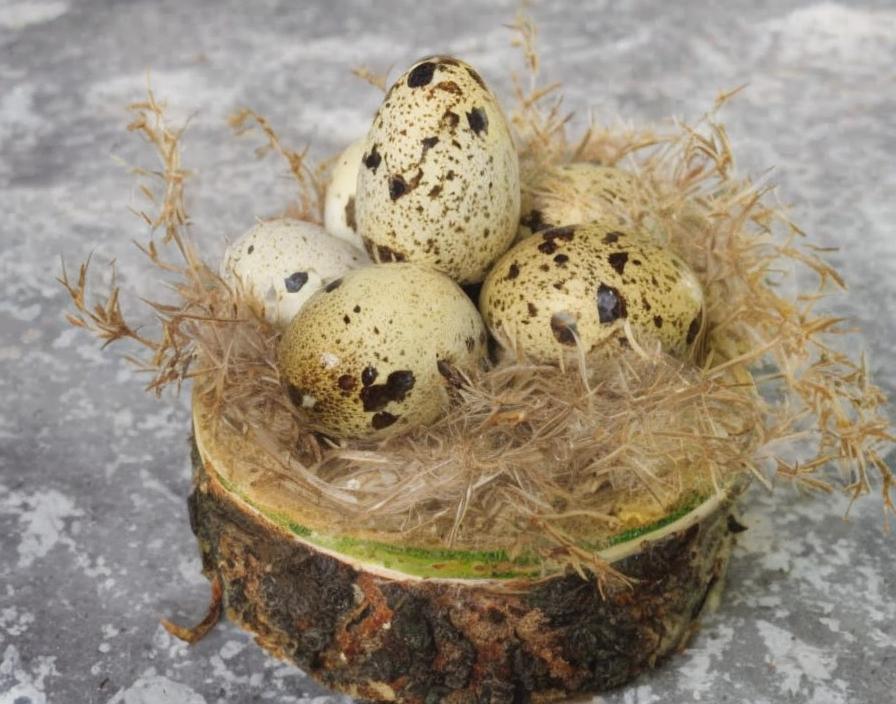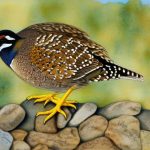Quail eggs are a popular choice for breeding due to their small size, low maintenance, and high productivity. They are a great source of protein and essential nutrients, making them a valuable addition to any homestead or farm. Quail eggs are also known for their delicate flavor and are often sought after by chefs and food enthusiasts. When it comes to breeding quail eggs, it’s important to understand the basics of selecting healthy eggs, creating the ideal breeding environment, and caring for the chicks after hatching. With the right knowledge and preparation, quail egg breeding can be a rewarding and profitable venture for any poultry enthusiast.
Quail eggs come in a variety of colors, including brown, blue, and speckled, making them not only a practical choice for breeding but also an aesthetically pleasing addition to any farm or homestead. They are also known for their high hatchability rate, with most fertile eggs successfully hatching within 17-18 days. Quail eggs are also relatively easy to care for, requiring minimal space and resources compared to other poultry species. With the right care and attention, quail eggs can be a valuable addition to any breeding program, providing a sustainable source of protein and income for the breeder.
Key Takeaways
- Quail eggs are a popular choice for breeding due to their small size and high nutritional value.
- When selecting quail eggs for breeding, choose ones that are clean, uncracked, and of similar size.
- Creating the ideal breeding environment for quail eggs involves providing a clean and spacious nesting area with proper ventilation and temperature control.
- Incubating quail eggs requires a stable temperature and humidity level, as well as regular turning of the eggs for successful hatching.
- After hatching, care for quail chicks by providing a warm and clean brooding area, along with proper nutrition and access to water.
- To maximize quail egg breeding success, monitor the health of the breeding stock, keep detailed records, and be prepared for potential challenges such as infertility or hatching issues.
- Common challenges in quail egg breeding include infertility, low hatch rates, and disease outbreaks, which can be addressed through proper management, hygiene, and veterinary care.
Selecting Healthy Quail Eggs for Breeding
When it comes to breeding quail eggs, selecting healthy eggs is crucial for successful hatching and chick development. Healthy quail eggs should have a smooth, clean shell without any cracks or blemishes. The shell should also be strong and resilient, as this is essential for protecting the developing embryo during the incubation process. In addition to the shell, it’s important to select eggs that are of a uniform size and shape, as this can indicate the overall health and fertility of the egg.
Another important factor to consider when selecting quail eggs for breeding is the age of the eggs. Fresh eggs are more likely to be fertile and have a higher hatchability rate compared to older eggs. It’s also important to consider the breeding history of the parent birds when selecting eggs for breeding. Birds that have been well-fed and properly cared for are more likely to produce healthy, fertile eggs compared to birds that have been under stress or malnourished. By carefully selecting healthy quail eggs for breeding, breeders can increase their chances of successful hatching and produce strong, healthy chicks.
Creating the Ideal Breeding Environment for Quail Eggs
Creating the ideal breeding environment is essential for successful quail egg breeding. The breeding environment should be clean, well-ventilated, and free from any potential sources of stress or disturbance. It’s important to provide the quail with ample space to move around and engage in natural behaviors, as this can help reduce stress and promote overall health and fertility. The breeding environment should also be equipped with appropriate nesting materials, such as straw or hay, to provide a comfortable and secure space for the quail to lay their eggs.
In addition to the physical environment, it’s important to consider the social dynamics of the quail flock when creating the breeding environment. Quail are social birds that thrive in groups, so it’s important to provide them with ample space and resources to establish a natural pecking order and social structure. Providing multiple nesting boxes and hiding spots can also help reduce competition and aggression among the birds, creating a more harmonious breeding environment. By creating an ideal breeding environment for quail eggs, breeders can help promote overall health and fertility in their flock, leading to successful hatching and chick development.
Incubating Quail Eggs for Successful Hatching
Incubating quail eggs is a critical step in the breeding process and requires careful attention to temperature, humidity, and turning frequency. Quail eggs should be placed in a clean, well-regulated incubator set at a temperature of around 99.5 degrees Fahrenheit with a humidity level of 50-60%. It’s important to monitor the temperature and humidity levels regularly throughout the incubation period to ensure optimal conditions for embryo development. Turning the eggs several times a day is also essential for preventing the embryo from sticking to the shell and promoting even heat distribution.
The incubation period for quail eggs typically lasts around 17-18 days, after which the chicks will begin to hatch. It’s important to closely monitor the hatching process and provide assistance to any chicks that may be struggling to hatch on their own. Once the chicks have hatched, they should be carefully removed from the incubator and placed in a warm, clean brooder with access to food and water. By carefully incubating quail eggs and providing proper care during the hatching process, breeders can increase their chances of successful hatching and produce strong, healthy chicks.
Caring for Quail Chicks After Hatching
Caring for quail chicks after hatching is essential for promoting healthy growth and development. Chicks should be provided with a clean, warm brooder equipped with a heat lamp or heating pad to maintain a temperature of around 95 degrees Fahrenheit during the first week of life. It’s important to monitor the temperature regularly and adjust as needed to ensure the chicks are comfortable and thriving. Chicks should also have access to fresh water and high-quality chick starter feed to support their nutritional needs during this critical stage of development.
In addition to providing for their basic needs, it’s important to handle quail chicks gently and minimize stress during the early stages of life. This can help promote trust and socialization with humans, making it easier to handle and care for the birds as they mature. It’s also important to monitor the chicks for any signs of illness or distress and provide prompt veterinary care if needed. By providing attentive care and proper nutrition after hatching, breeders can help ensure that their quail chicks grow into strong, healthy adults capable of producing fertile eggs for future breeding.
Tips for Maximizing Quail Egg Breeding Success

Maximizing quail egg breeding success requires careful attention to nutrition, health, and environmental factors. Providing a balanced diet rich in protein, vitamins, and minerals is essential for promoting overall health and fertility in quail. It’s also important to provide regular access to clean water and ensure that the birds have access to ample space and resources to engage in natural behaviors. Regular health checks and prompt veterinary care can also help identify and address any potential issues that may impact fertility or hatchability.
In addition to nutrition and health, it’s important to carefully manage social dynamics within the quail flock to minimize stress and promote overall well-being. Providing multiple nesting boxes, hiding spots, and perches can help reduce competition and aggression among the birds, creating a more harmonious breeding environment. It’s also important to monitor egg production and fertility regularly to identify any potential issues early on and take corrective action as needed. By implementing these tips for maximizing quail egg breeding success, breeders can increase their chances of producing healthy, fertile eggs and strong, thriving chicks.
Common Challenges and Solutions in Quail Egg Breeding
Quail egg breeding can present several common challenges that breeders may encounter, such as low hatchability rates, infertility issues, or poor chick survival rates. These challenges can often be attributed to factors such as inadequate nutrition, environmental stressors, or genetic predispositions. To address these challenges, breeders should carefully assess their breeding program and make adjustments as needed to promote overall health and fertility in their flock.
One common challenge in quail egg breeding is low hatchability rates, which can be caused by factors such as improper incubation conditions or poor egg handling practices. To address this challenge, breeders should carefully monitor incubation conditions and ensure that eggs are handled with care throughout the process. Infertility issues can also arise in quail egg breeding programs due to factors such as age, genetics, or environmental stressors. To address infertility issues, breeders should carefully select healthy breeding stock with a proven track record of fertility and take steps to minimize stress within the flock.
Another common challenge in quail egg breeding is poor chick survival rates, which can be caused by factors such as inadequate nutrition or environmental stressors. To address this challenge, breeders should provide high-quality nutrition and carefully manage social dynamics within the flock to minimize stress and promote overall well-being. By identifying common challenges in quail egg breeding and implementing effective solutions, breeders can increase their chances of success and produce strong, healthy chicks capable of producing fertile eggs for future breeding.
Another common challenge in quail egg breeding is poor chick survival rates, which can be caused by factors such as inadequate nutrition or environmental stressors. To address this challenge, breeders should provide high-quality nutrition and carefully manage social dynamics within the flock to minimize stress and promote overall well-being. By identifying common challenges in quail egg breeding and implementing effective solutions, breeders can increase their chances of success and produce strong, healthy chicks capable of producing fertile eggs for future breeding. Additionally, maintaining proper sanitation and hygiene in the breeding environment can also help reduce the risk of disease and improve overall chick survival rates. Regular monitoring of the flock’s health and behavior can also aid in early detection of any potential issues, allowing for prompt intervention and care.
If you’re considering breeding quail, it’s essential to provide them with a suitable environment for nesting and laying eggs. A well-designed chicken coop can also serve as a great space for quail breeding. Poultry Wizard offers valuable insights on creating the perfect coop for your quail with their article on the Snaplock Chicken Coop. This resource provides tips on creating a comfortable and secure space for your quail to thrive and reproduce. Additionally, understanding the importance of the floor of the coop, as discussed in their Floor of Chicken Coop article, can contribute to successful quail breeding. For those located in Muskegon, Michigan, the article on Chicken Coop Muskegon offers location-specific advice for creating an ideal breeding environment for quail.
FAQs
What are quail eggs used for?
Quail eggs are commonly used for breeding to produce more quail for meat or egg production. They can also be consumed as a delicacy and are often used in gourmet cooking.
How do you select quail eggs for breeding?
When selecting quail eggs for breeding, it is important to choose eggs that are clean, uncracked, and of similar size. It is also recommended to select eggs from healthy, well-nourished quail.
How long does it take for quail eggs to hatch?
Quail eggs typically take about 17-18 days to hatch, although this can vary slightly depending on the specific breed of quail.
What is the best way to incubate quail eggs?
Quail eggs can be incubated using a specialized quail egg incubator or a standard poultry egg incubator. It is important to maintain the proper temperature and humidity levels throughout the incubation period.
How many quail eggs should be used for breeding?
The number of quail eggs used for breeding can vary depending on the specific breeding goals and the capacity of the incubator. It is common to use anywhere from a few dozen to several hundred eggs for breeding purposes.
What are the benefits of breeding quail for eggs?
Breeding quail for eggs can provide a sustainable source of high-protein, nutritious eggs. Quail eggs are also in high demand in certain culinary markets and can be a profitable venture for small-scale farmers.
Meet Walter, the feathered-friend fanatic of Florida! Nestled in the sunshine state, Walter struts through life with his feathered companions, clucking his way to happiness. With a coop that’s fancier than a five-star hotel, he’s the Don Juan of the chicken world. When he’s not teaching his hens to do the cha-cha, you’ll find him in a heated debate with his prized rooster, Sir Clucks-a-Lot. Walter’s poultry passion is no yolk; he’s the sunny-side-up guy you never knew you needed in your flock of friends!







